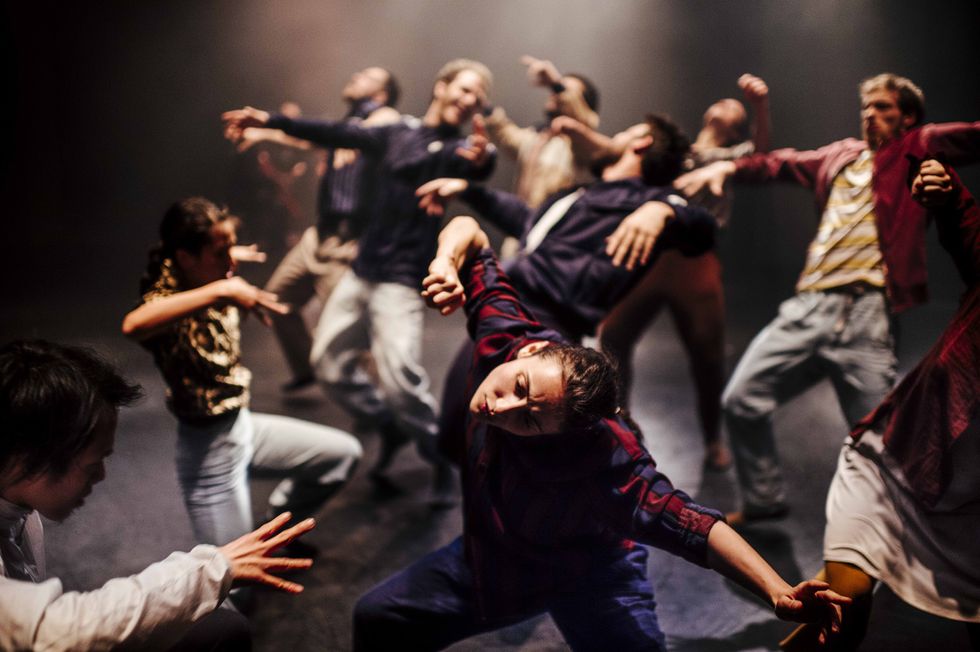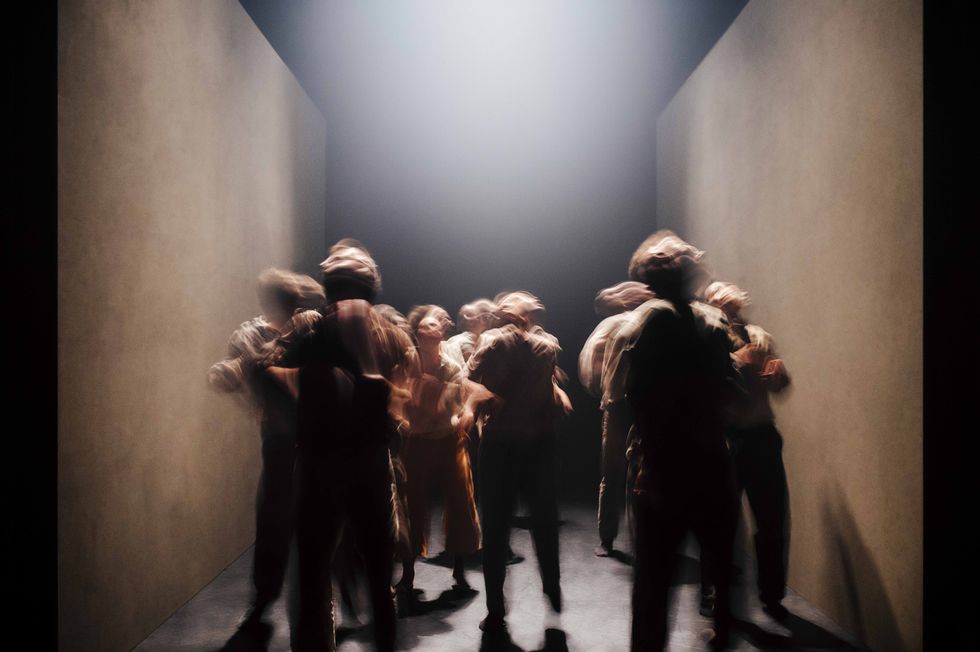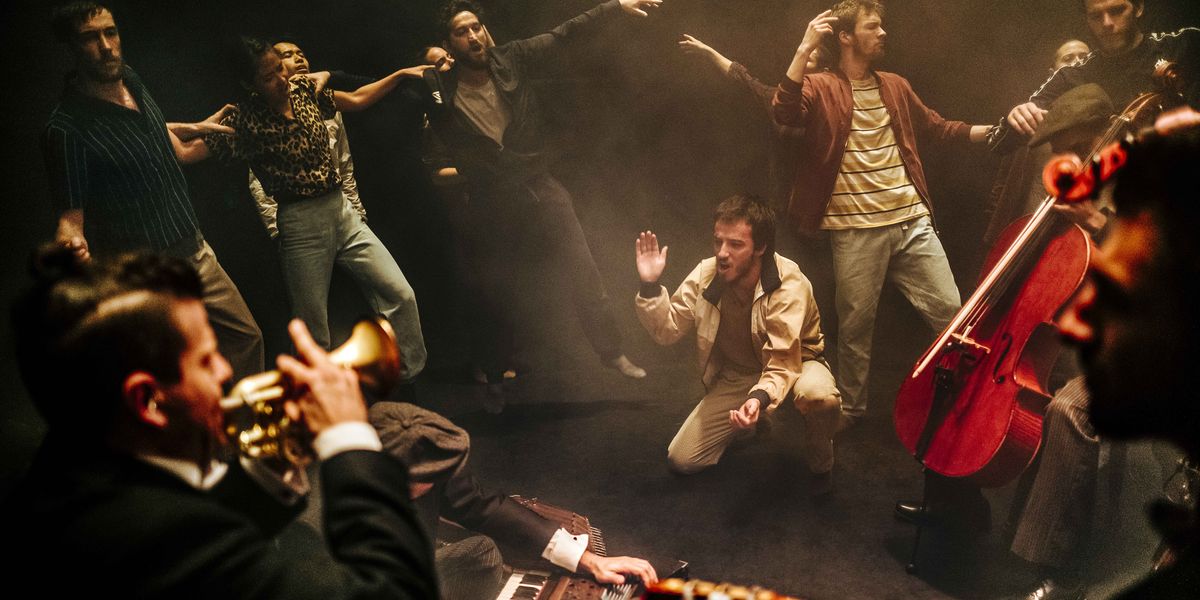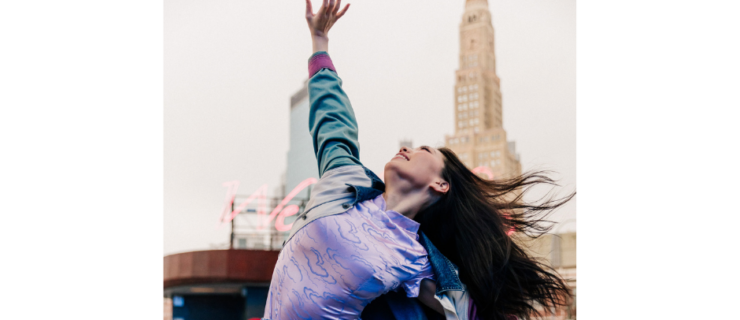At the End of All Things: Hofesh Shechter on His Latest Work
The first time I saw a
Hofesh Shechter work, the usher handed me a program and a pair of earplugs as I walked up to the theater door. I was running late so I stuffed the tiny foam pieces in my pocket. I could not imagine in what universe I would ever need such things if I didn’t even use them at rock concerts. And then I walked into the theater. I was pleasantly surprised to be accosted by the decibel level of what appeared to be a death metal band playing live for Shechter’s Political Mother. I never used the earplugs, but perhaps the usual concert dance audience was grateful for the gesture.
In 2012, t
he show was a surprise
even by the standards of Brooklyn Academy of Music’s Next Wave Festival. In the years since, the Israeli choreographer has continued to shock and awe American audiences with his powerful, raw dance theater.
His latest creation,
Grand Finale, is a mature study in the contrasts and contradictions, the violence and the transcendence, that mark the modern human condition. I caught up with Shechter, now based in London, ahead of the work’s appearance at BAM Next Wave November 9–11.

Grand Finale. Photo by Rahi Rezvani, Courtesy Danse Danse
What was your inspiration for
Grand Finale? Is it purely abstract or is there a story in it for you?
I try to make work that is like a real night dream: You feel a lot of things and kind of know where you are are, and you kind of understand what is happening. It is an opportunity to express and digest a lot of emotions in the world today and in my life. And the responses are subjective; some people speak to me about the absolute despair in it and some speak of the hope they see, a shining star in the dark or a celebration of life. I think these two powers just exist together. There is a feeling of celebrating life regardless of how difficult it is, and, perhaps new to me, the feeling that there is beauty in the horrifying truth of our world, in what people are and how they behave. I was trying to make poetry with atrocities around me.
What is your creative process like when you are both composing and choreographing? Has this process changed over the last 10 years of your work?
I am learning each time. Normally I write the score and meet musicians near the end of the dance process. In the case of Grand Finale, I did a bit more of the early work with music and the musicians.
The score was not completed when I began with dancers. There was a lot of shifting, moving, readjusting. It is really a nonlinear, complex, messy experience.
When working with live musicians, I am not just telling them what to do, I am trying to find material to see how they flourish and connect with it. I want them to feel comfortable, to be able to improvise, like my dancers. This time, I wanted to discover new sounds and instruments and see how they could define the new material with dancers. The whole essence is human, very gentle, though of course the track has percussive energies, too. It was important to me that the band hold together the human spirit.

Grand Finale. Photo by Rahi Rezvani, Courtesy Danse Danse
What was the collaboration process like with your designers?
I try not to have literal conversations with designers. I want the design to kick us out of the literal world. The lighting designer Tom Visser was a great collaborator. It was wordless, and he stepped into my vision through doing and trying. For three days we just played a cold/hot game, getting warmer, colder, and then hot, and he read me through that process. His artistic vision is powerful and he has this ability to make the piece better without interrupting it.
And the walls in this show…
The movement of the walls was a very technical thing. My original idea was to shift them around the space but not have the audience see those movements. But then set designer Tom Scutt came up with walls that were so elegant and moved so smoothly, and had such artistic merit on their own, that we decided to make their movements visible. They appear solid but the world keeps shifting, and people are existing in the spaces in-between.
I am curious about if, and how, your military service [mandatory in Israel] informs your work? This is a rare thing in America, for a choreographer to also be a veteran.
Everything I have experienced goes into my work. I was a clerk in the military and I had special status as a dancer, but even though I was a “chocolate soldier” and not on the battlefield, I was still sucked into the system of the army. This hierarchic, fascistic system shocked me and was difficult for me to accept. It amplified a lot of my questions.
You are returning to New York after your Broadway choreographic debut with
Fiddler on the Roof, for which you received a Tony nomination. Do you feel like there are expectations based on what has seemed to many like such rapid success?
I didn’t even consider it. Maybe I am a bit like a child? I look at what is in front of me and I either get excited or afraid or nervous. Right now I am just excited to bring Grand Finale to audiences. We have had great experiences at BAM and I think the audience will connect to its power. If a different sort of audience is curious about Grand Finale because of Fiddler, great. I don’t think they will be disappointed. For Broadway audiences to delve into a world that is different than musicals…that is exciting to me.

Grand Finale. Photo by Rahi Rezvani, Courtesy Danse Danse




